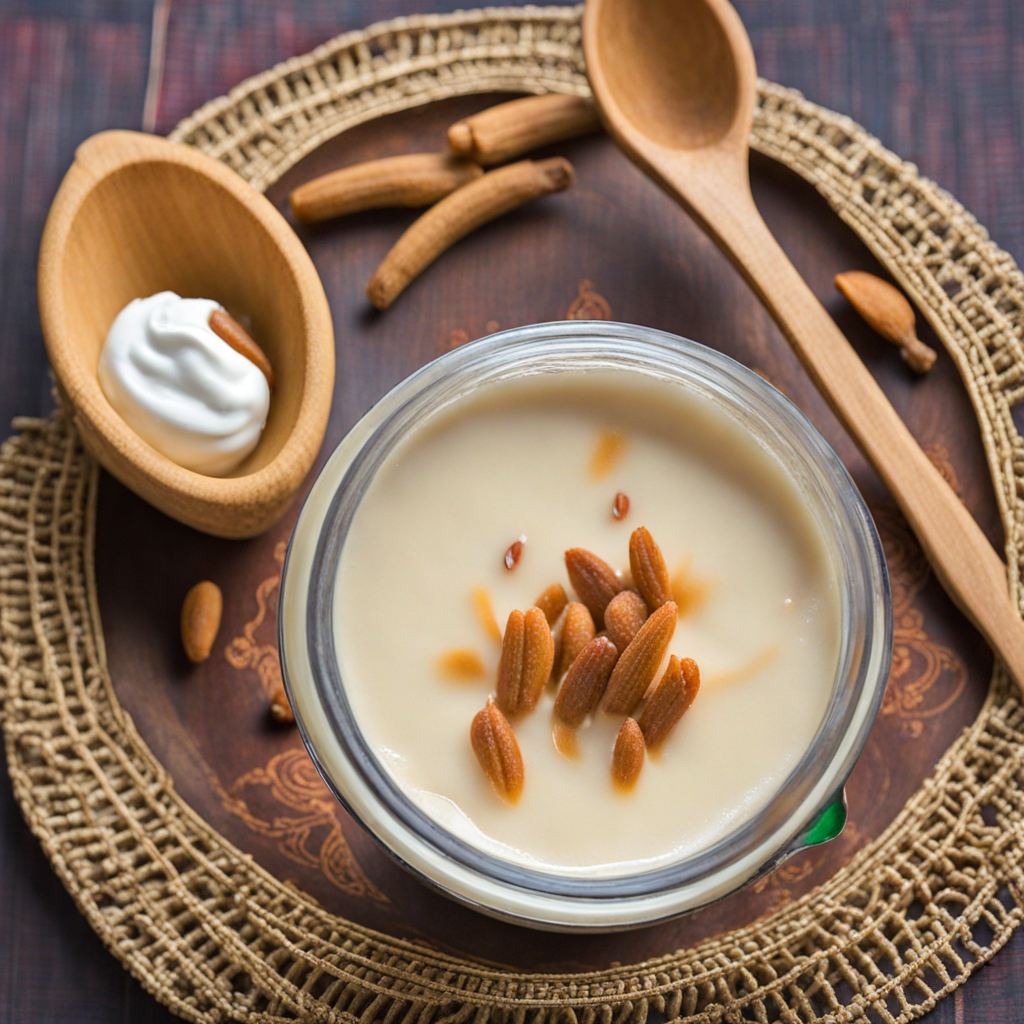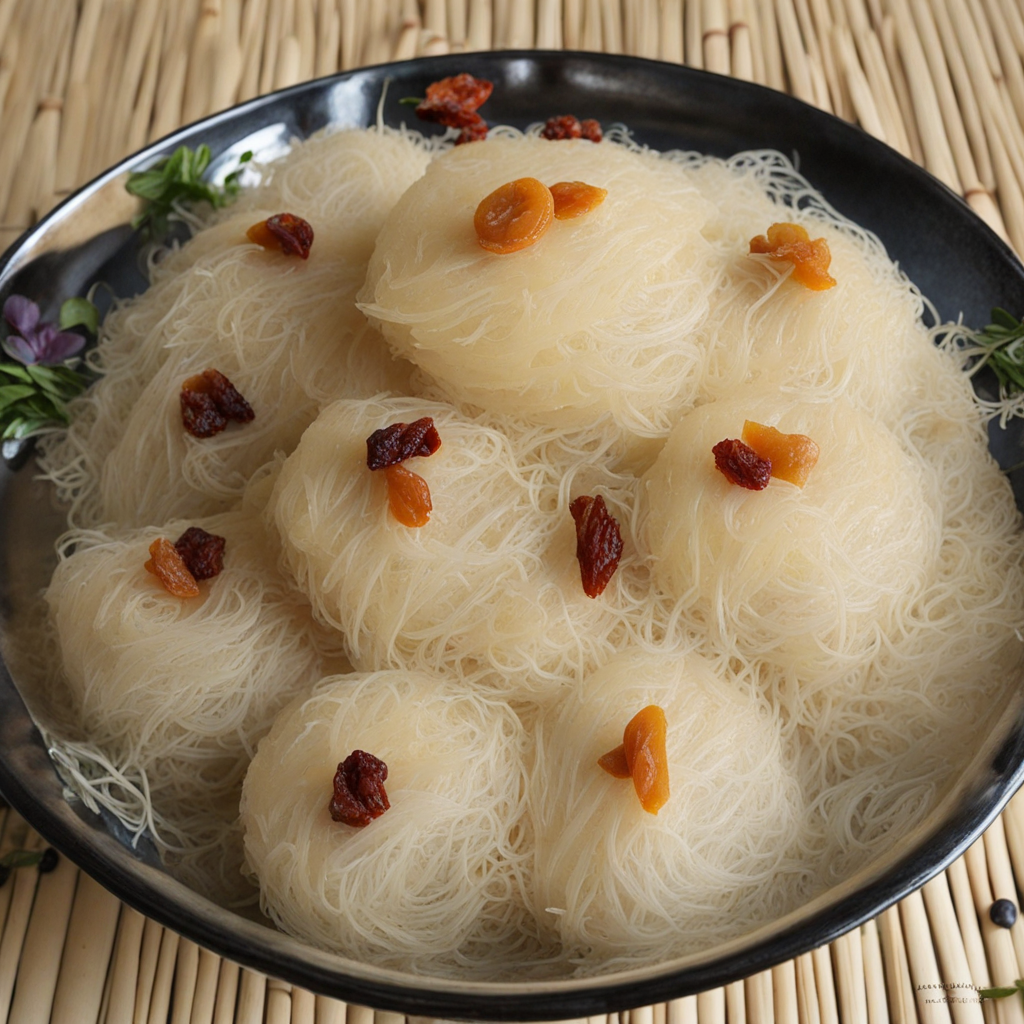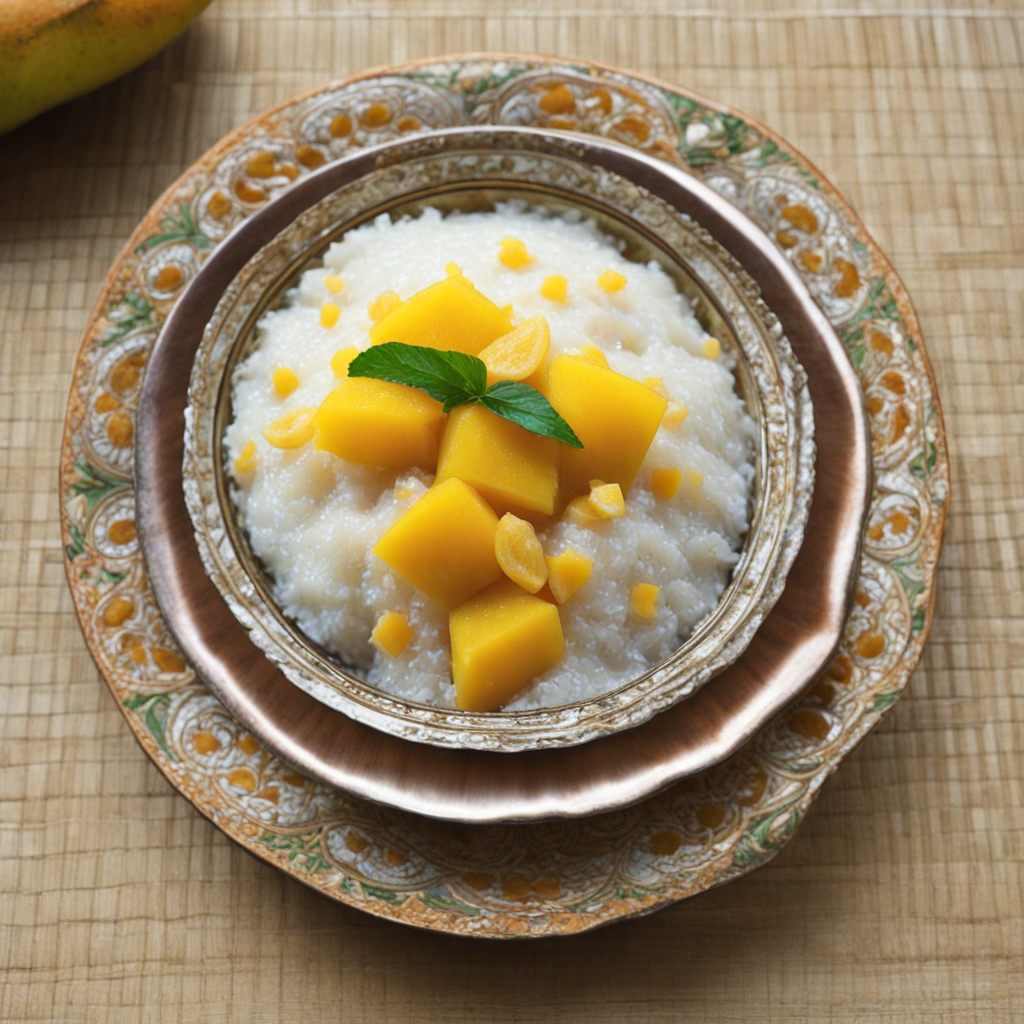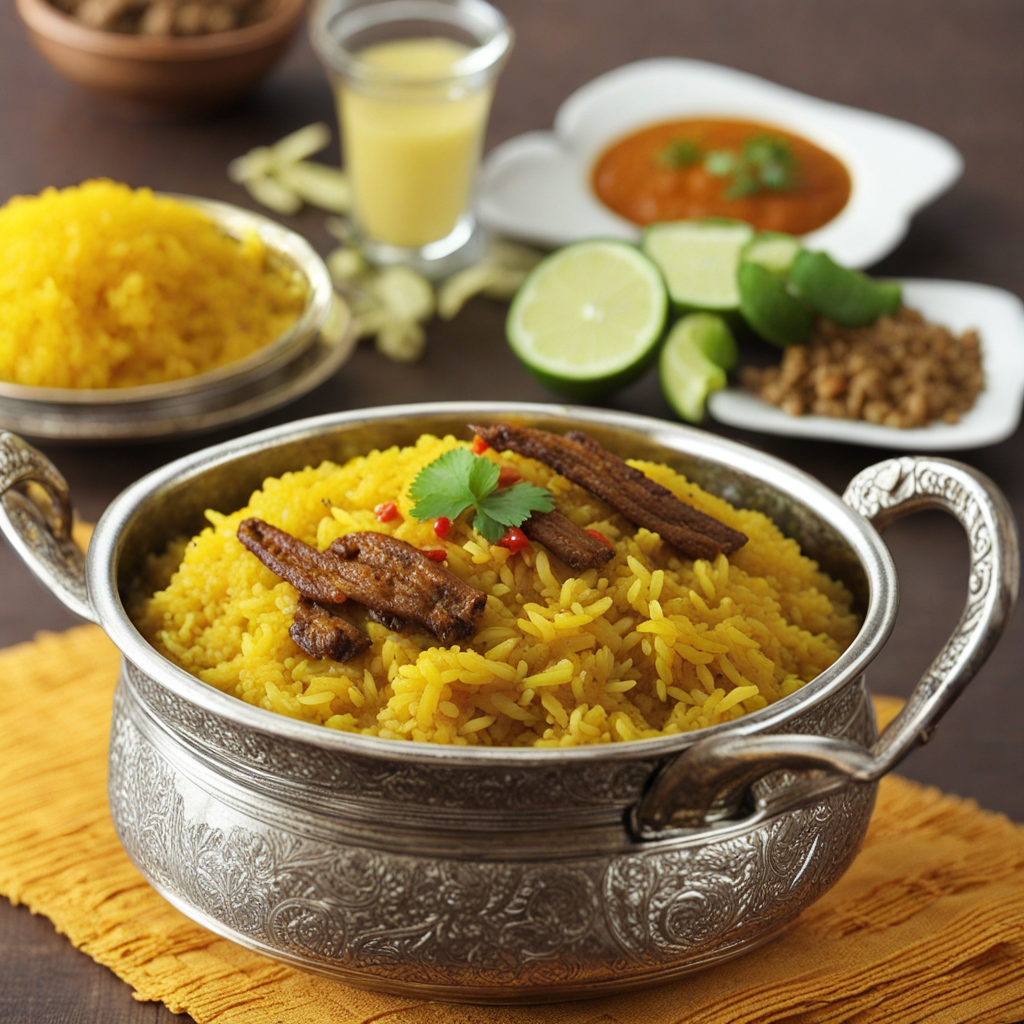Mishti Doi
Mishti Doi is a traditional Bengali dessert that beautifully encapsulates the essence of sweet indulgence. This creamy yogurt, often referred to as sweetened yogurt, is made by fermenting milk with sugar and a hint of cardamom. The preparation involves reducing whole milk to a thick consistency, which is then sweetened with jaggery or sugar, adding a rich caramel flavor. The mixture is poured into earthen pots for fermentation, allowing it to develop a unique tangy sweetness that balances perfectly with its creamy texture. The clay pots not only enhance the taste but also absorb excess moisture, resulting in a luscious dessert that is both smooth and satisfying. The flavor profile of Mishti Doi is a delightful blend of sweetness and a slight tartness, making it a refreshing treat after a hearty meal. The use of jaggery, a traditional unrefined sugar, infuses the yogurt with deep, earthy notes that elevate its taste. Often garnished with a sprinkle of crushed pistachios or almonds, Mishti Doi offers a delightful contrast in texture and adds a nutty crunch to each spoonful. The warm spices of cardamom subtly linger in the background, enhancing the overall flavor experience and inviting you to savor every bite. Enjoying Mishti Doi is not just about the taste, but also about embracing a cultural tradition. It is commonly served during festivals, celebrations, and family gatherings in Bangladesh, symbolizing joy and togetherness. The creamy dessert can be enjoyed chilled, making it an ideal treat for hot summer days, or at room temperature, allowing the flavors to fully develop. With every spoonful, you embark on a journey through the rich culinary heritage of Bangladesh, making Mishti Doi a must-try for anyone eager to explore new and delightful tastes.
How It Became This Dish
The Sweet History of Mishti Doi: Bangladesh’s Cultural Delight Mishti doi, or sweet yogurt, is a cherished dessert in Bangladesh, embodying the country's rich culinary heritage. Its origins, cultural significance, and evolution reflect the broader narrative of Bangladeshi society, where food is not merely sustenance but a profound expression of identity, tradition, and community. #### Origins of Mishti Doi The roots of mishti doi trace back to ancient times, with influences from both Indian and Mughal culinary traditions. The term "mishti" means sweet, while "doi" translates to yogurt or curd. The dessert is believed to have emerged during the Mughal era in the Indian subcontinent, which saw a fusion of various culinary practices. The Mughals were particularly known for their love of rich, creamy dishes, and mishti doi is a perfect representation of this gastronomic legacy. In the early days, yogurt was a staple in the diets of people across the region, valued for its nutritional benefits and versatility. The practice of fermenting milk into yogurt is ancient, with evidence suggesting its use as far back as 5000 BCE. However, the sweetened version, mishti doi, likely evolved later, as sugar became more widely available through trade. The introduction of jaggery (a traditional unrefined sugar) and then refined sugar into the region’s culinary practices significantly influenced the development of sweet dishes, including mishti doi. #### Cultural Significance Mishti doi holds a special place in Bengali culture, symbolizing celebration, hospitality, and tradition. It is often served during festivals, weddings, and family gatherings, making it a staple dessert that bridges generations. In Bangladesh, offering mishti doi to guests is a way of expressing warmth and hospitality. The dish transcends mere taste; it is an invitation to share in the joy and abundance of the host’s home. The dessert is more than just a treat; it is a cultural artifact reflecting the agrarian lifestyle of the Bengali people. Traditionally, it is made using clay pots, which impart a unique flavor to the yogurt. The porous nature of the clay allows the yogurt to breathe during fermentation, enhancing its creaminess and flavor. The slow, natural fermentation process is a testament to the patience and care that defines Bangladeshi culinary practices. Mishti doi also plays a role in religious and cultural rituals. During the Durga Puja festival, the goddess Durga is offered various sweets as part of the rituals, including mishti doi. This reflects the dish's deep-rooted connection to spirituality and community, where food becomes a medium for devotion and celebration. #### Development Over Time As Bangladesh developed over the centuries, so too did its culinary landscape, including mishti doi. In the early 20th century, urbanization and the growth of cities brought about changes in food production and consumption. The establishment of sweet shops, known as ‘mishtir dokan,’ became popular, offering a variety of traditional sweets, including mishti doi. These shops not only made the dish more accessible but also evolved its presentation and preparation techniques. With the partition of India in 1947 and the subsequent independence of Bangladesh in 1971, the country experienced significant social and cultural upheaval. Despite these challenges, food remained a central element of national identity. Mishti doi, in particular, became a symbol of resilience and continuity, representing the sweet joys of life amidst adversity. In modern times, mishti doi has undergone further transformations, adapting to contemporary tastes while retaining its traditional essence. Variations have emerged, incorporating different flavors and ingredients. Some modern interpretations include the addition of fruits, nuts, and even chocolate, catering to a global audience while honoring its roots. The rise of culinary tourism has also played a significant role in popularizing mishti doi beyond Bangladesh. As global interest in authentic and traditional foods grows, mishti doi has found its way onto menus in restaurants around the world, showcasing the depth of Bangladeshi cuisine. Food festivals and cultural events highlight this dessert, allowing people to experience its unique flavors and history. #### Conclusion Mishti doi is more than just a dessert; it is a reflection of the Bengali spirit—a blend of tradition, resilience, and hospitality. Its journey from ancient times to the present day illustrates the dynamic nature of food as a cultural expression. Today, as Bangladesh continues to evolve, mishti doi remains a beloved symbol of home, family, and celebration, encapsulating the essence of a nation that cherishes its culinary heritage. In every spoonful of mishti doi, one can taste the history, the traditions, and the love that have been passed down through generations. It serves as a reminder of the importance of community and the shared experiences that food can create. As Bangladesh strides into the future, mishti doi will undoubtedly continue to be a sweet symbol of its rich cultural tapestry, cherished by locals and admired by those who discover its delightful flavor.
You may like
Discover local flavors from Bangladesh







